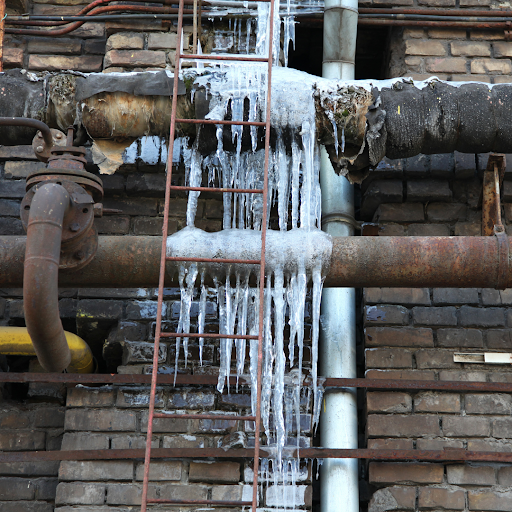Guidance for Avoiding Frozen Plumbing in Cold Weather: Specialist Tips
Guidance for Avoiding Frozen Plumbing in Cold Weather: Specialist Tips
Blog Article
Are you currently in search of details on Preventing and dealing with frozen pipes?

Cold weather can ruin your plumbing, especially by freezing pipelines. Below's just how to avoid it from happening and what to do if it does.
Introduction
As temperatures drop, the danger of frozen pipes boosts, potentially causing costly repairs and water damage. Comprehending just how to stop icy pipelines is vital for property owners in chilly environments.
Understanding Frozen Pipelines
What triggers pipelines to ice up?
Pipes freeze when exposed to temperature levels listed below 32 ° F (0 ° C) for prolonged periods. As water inside the pipelines ices up, it increases, putting pressure on the pipeline walls and possibly causing them to burst.
Dangers and damages
Frozen pipes can lead to water disruptions, building damage, and pricey repair services. Ruptured pipelines can flood homes and trigger considerable structural damage.
Indicators of Frozen Piping
Identifying frozen pipelines early can prevent them from bursting.
Exactly how to determine frozen pipelines
Look for reduced water circulation from faucets, unusual odors or sounds from pipes, and noticeable frost on revealed pipelines.
Avoidance Tips
Protecting prone pipes
Wrap pipelines in insulation sleeves or make use of warm tape to safeguard them from freezing temperatures. Concentrate on pipelines in unheated or external locations of the home.
Home heating strategies
Keep interior spaces properly heated up, particularly areas with pipes. Open closet doors to enable warm air to flow around pipelines under sinks.
Protecting Outdoor Pipes
Garden hose pipes and exterior taps
Separate and drain garden tubes before winter season. Mount frost-proof spigots or cover outdoor faucets with insulated caps.
What to Do If Your Pipes Freeze
Immediate activities to take
If you presume icy pipes, keep taps open up to alleviate stress as the ice melts. Use a hairdryer or towels taken in warm water to thaw pipelines slowly.
Long-Term Solutions
Structural adjustments
Consider rerouting pipelines far from exterior wall surfaces or unheated locations. Add extra insulation to attic rooms, basements, and crawl spaces.
Updating insulation
Purchase premium insulation for pipes, attic rooms, and walls. Correct insulation helps keep constant temperature levels and decreases the risk of icy pipes.
Final thought
Protecting against frozen pipelines calls for aggressive measures and fast feedbacks. By recognizing the causes, indicators, and preventive measures, house owners can safeguard their pipes during winter.
5 Ways to Prevent Frozen Pipes
Drain Outdoor Faucets and Disconnect Hoses
First, close the shut-off valve that controls the flow of water in the pipe to your outdoor faucet. Then, head outside to disconnect and drain your hose and open the outdoor faucet to allow the water to completely drain out of the line. Turn off the faucet when done. Finally, head back to the shut-off valve and drain the remaining water inside the pipe into a bucket or container. Additionally, if you have a home irrigation system, you should consider hiring an expert to clear the system of water each year.
Insulate Pipes
One of the best and most cost-effective methods for preventing frozen water pipes is to wrap your pipes with insulation. This is especially important for areas in your home that aren’t exposed to heat, such as an attic. We suggest using foam sleeves, which can typically be found at your local hardware store.
Keep Heat Running at 65
Your pipes are located inside your walls, and the temperature there is much colder than the rest of the house. To prevent your pipes from freezing, The Insurance Information Institute suggests that you keep your home heated to at least 65 degrees, even when traveling. You may want to invest in smart devices that can keep an eye on the temperature in your home while you’re away.
Leave Water Dripping
Moving water — even a small trickle — can prevent ice from forming inside your pipes. When freezing temps are imminent, start a drip of water from all faucets that serve exposed pipes. Leaving a few faucets running will also help relieve pressure inside the pipes and help prevent a rupture if the water inside freezes.
Open Cupboard Doors
Warm your kitchen and bathroom pipes by opening cupboards and vanities. You should also leave your interior doors ajar to help warm air circulate evenly throughout your home.

Do you enjoy reading up on Winter Plumbing Precautions: Preventing Frozen Pipes? Create a remark down below. We will be pleased to hear your responses about this write-up. Hoping that you come back again soon. Sharing is good. You just don't know, you may very well be helping someone out. We thank you for your readership.
Request A Quote Report this page